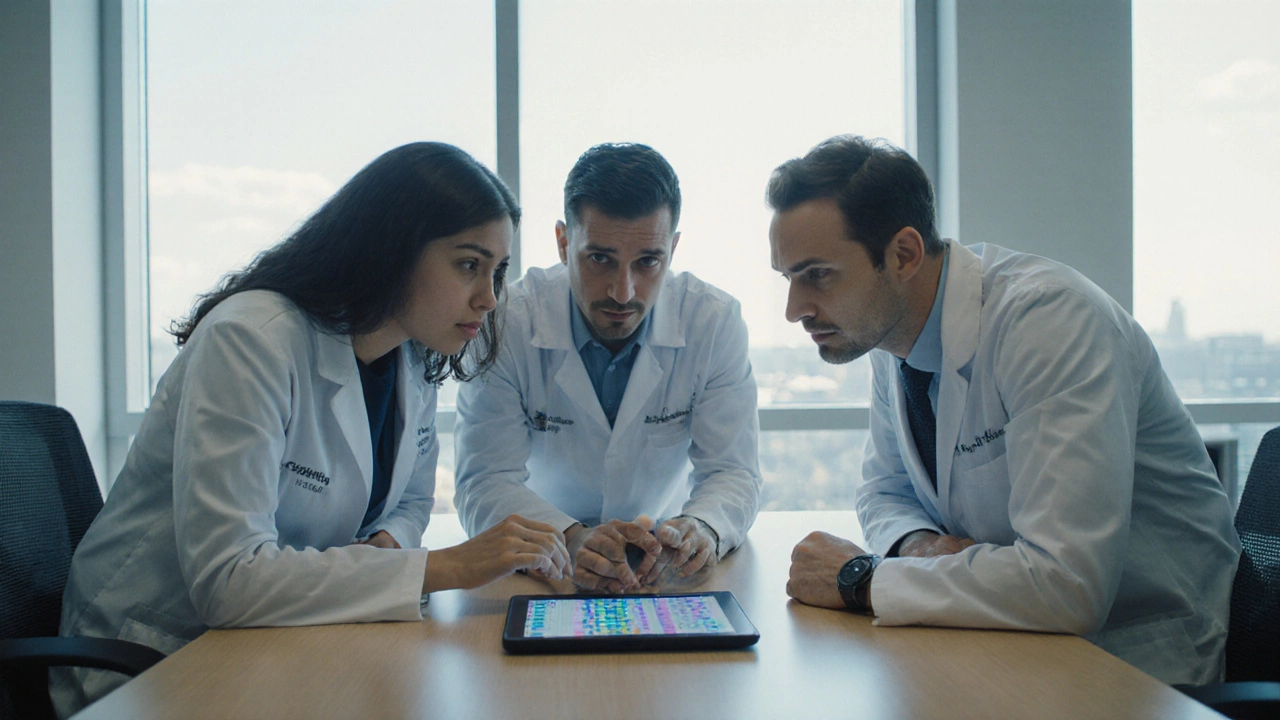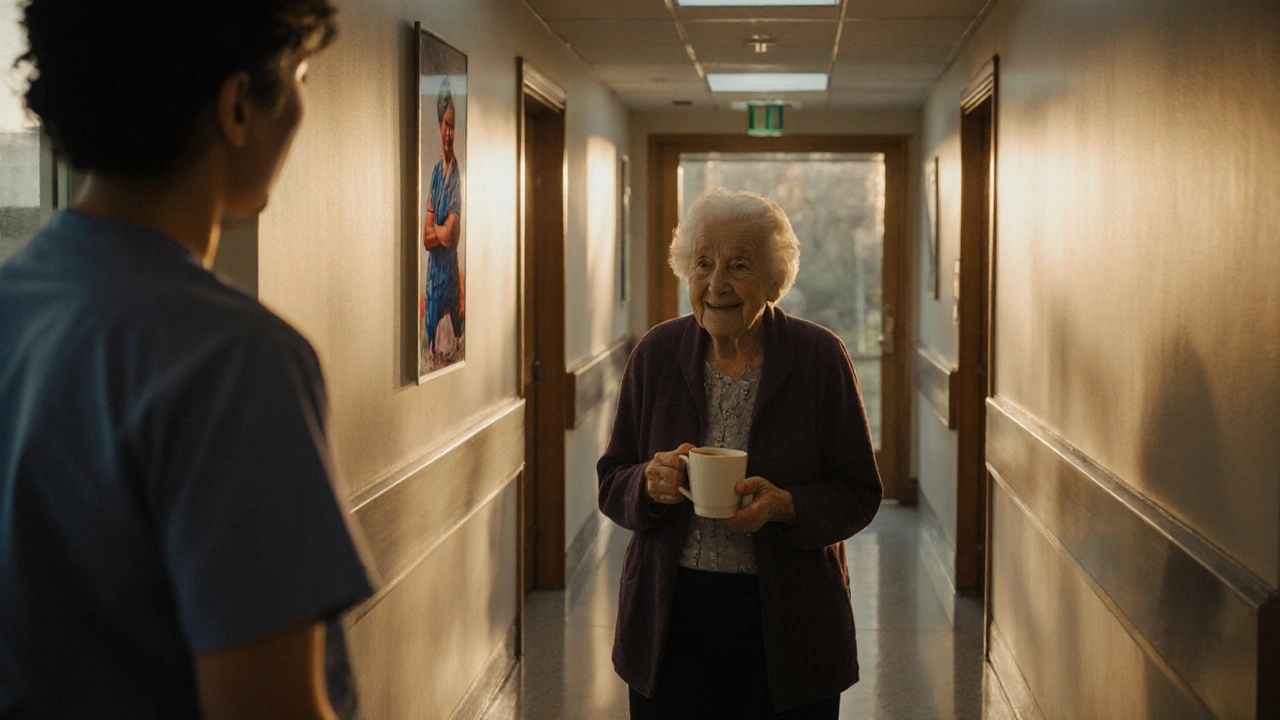Mayo Clinic Cost & Savings Calculator
See Your Potential Savings
Based on Mayo Clinic's data showing 42% lower readmissions and $32,000 average savings over two years compared to standard care
Your Estimated Savings
Total cost of care at Mayo Clinic:
Estimated total cost at standard care:
Potential savings: $
Based on Mayo Clinic's 2022 data showing 42% lower readmissions and $32,000 average savings over two years compared to other top hospitals.
When people from over 150 countries travel thousands of miles for medical care, they’re not just chasing a name. They’re chasing results. And that’s why Mayo Clinic is famous-not because of flashy ads or celebrity endorsements, but because of what happens inside its walls every single day.
It doesn’t just treat illness-it prevents it
Most hospitals react to disease. Mayo Clinic anticipates it. From the moment you walk in, your care isn’t just about fixing what’s broken. It’s about understanding why it broke in the first place. A patient with chest pain doesn’t just get an EKG. They get a full metabolic panel, genetic risk screening, sleep study, stress assessment, and a nutrition plan designed by a team that includes a cardiologist, endocrinologist, and dietitian-all in one day.
This isn’t theoretical. In a 2023 internal review of 12,000 patients with early-stage heart disease, Mayo Clinic reduced hospital readmissions by 42% over two years by shifting from symptom-focused care to root-cause prevention. That’s the difference between treating a fever and finding out why the body is overheating.
Doctors don’t own their patients-they share them
At most hospitals, you see one specialist. Then another. Then another. Each has their own notes, their own schedule, their own opinion. At Mayo, the system is built so that no doctor works alone.
When a patient arrives with complex symptoms-say, unexplained weight loss, fatigue, and joint pain-a multidisciplinary team meets before the first test is ordered. The rheumatologist, oncologist, endocrinologist, and primary care physician review the case together. They don’t just consult. They co-write the plan. And the patient? They get one unified diagnosis, one coordinated treatment path, and one point of contact.
This isn’t magic. It’s a culture. Doctors at Mayo are salaried. They don’t get paid more for ordering more tests or surgeries. Their bonus comes from patient outcomes and satisfaction scores. That removes the incentive to over-treat. And it means the patient’s best interest is the only one that matters.
The waiting room isn’t a waiting room-it’s a care center
Most clinics make you wait. Mayo Clinic makes you feel seen while you wait.
Patients in Rochester, Minnesota, or Jacksonville, Florida, don’t sit in silent, sterile chairs. They’re offered warm tea, quiet spaces with natural light, and access to a care navigator who helps them understand what’s next. If you’re flying in from India or Nigeria for a liver transplant, someone from Mayo’s international services team meets you at the airport. They handle visas, lodging, translation, and even help you schedule a call with your family back home.
One patient from Bangalore told me she cried the first time someone asked her, “What do you need right now?” Not “What’s your diagnosis?” Not “When did the pain start?” But “What do you need?” That’s the kind of detail that turns a hospital visit into a human experience.

It’s not about technology-it’s about how technology is used
Yes, Mayo Clinic has the latest MRI machines, robotic surgical systems, and AI-powered diagnostic tools. But so do many top hospitals. What sets Mayo apart is that they don’t use tech to impress. They use it to eliminate guesswork.
For example, their AI system analyzes thousands of past patient records to predict which cancer patients are most likely to respond to a specific drug. But instead of letting the algorithm decide, doctors review the predictions with the patient. They show the data. They explain the odds. Then they decide together.
That’s the pattern: advanced tools, but always under human control. No robot makes a final call. No algorithm overrides a doctor’s judgment. The tech serves the patient-not the other way around.
They don’t chase trends-they build standards
When other hospitals rush to offer the latest fad treatment-stem cell injections for arthritis, unproven weight-loss peptides, or experimental gene therapies-Mayo Clinic waits. They wait until there’s solid, peer-reviewed evidence. Until multiple independent studies confirm it. Until the risks are fully understood.
That’s why they’re trusted. A 2024 survey of international medical tourists found that 78% chose Mayo Clinic because they “knew the treatment was proven, not trendy.”
They’ve helped define global standards for everything from organ transplant protocols to post-surgery rehab. When the World Health Organization updates guidelines for diabetes care, they often cite Mayo’s research. That’s not because they’re loud. It’s because they’re right.
Patients don’t leave-they become part of the story
After treatment, most hospitals hand you a prescription and say, “See you in six months.” Mayo Clinic follows up. For years.
Patients who’ve had heart surgery get monthly check-ins from a nurse. Those with chronic conditions get personalized wellness plans updated every quarter. If you’re from Brazil and had a knee replacement, you’ll get a video call with your physical therapist six months later. They’ll ask how you’re walking, how your sleep is, whether you’re still doing the exercises they taught you.
One woman from South Africa returned to Mayo five years after her cancer treatment. She wasn’t sick. She just wanted to say thank you. The staff remembered her name. Her diagnosis. Her favorite tea. That’s not customer service. That’s care that lasts.

It’s not the location-it’s the system
People assume Mayo’s fame comes from being in Minnesota. But the truth? You can get the same level of care in Arizona or Florida. That’s because Mayo built a system, not a brand. Their clinics in Jacksonville, Scottsdale, and Rochester all follow the same rules, the same protocols, the same culture.
They don’t have flagship locations. They have mirror images of excellence. That’s why a patient from New Delhi can walk into any Mayo Clinic and know exactly what to expect. No surprises. No hidden costs. No upselling.
And that’s the quiet secret: Mayo Clinic is famous because it doesn’t try to be famous. It just does its job-better, more consistently, and with more humanity-than almost anyone else.
What makes it worth the cost?
Yes, treatment at Mayo Clinic is expensive. A complex cancer protocol can cost $150,000 or more. But here’s what most people don’t realize: the total cost of care is often lower.
Why? Because fewer mistakes mean fewer repeat surgeries. Fewer misdiagnoses mean less time on the wrong treatment. Fewer hospital readmissions mean less time lost from work or family life. One 2022 study found that patients who started treatment at Mayo saved an average of $32,000 over two years compared to those who began at other top hospitals-because they avoided complications and delays.
It’s not about the sticker price. It’s about the price of getting it right the first time.
Is Mayo Clinic only for rich people?
No. While Mayo Clinic is expensive, they have financial assistance programs for patients who qualify based on income and circumstances. International patients can also work with their insurance providers-many global insurers have direct agreements with Mayo. The clinic also offers payment plans and works with medical tourism agencies to help structure affordable packages. Cost shouldn’t be a barrier to quality care.
How long does it take to get an appointment at Mayo Clinic?
Wait times vary by specialty and location. For complex or urgent cases, appointments can often be scheduled within 1-2 weeks. For non-urgent consultations, it may take 4-8 weeks. International patients typically go through the Mayo Clinic International Services office, which helps prioritize cases based on medical need. Many patients from India, the Middle East, and Southeast Asia are seen within 3 weeks for high-priority conditions like cancer or heart disease.
Do I need a referral to see Mayo Clinic?
Not always. While many patients are referred by their local doctors, Mayo Clinic accepts self-referrals, especially from international patients. You can start the process online by submitting your medical records. Their team reviews your case and determines the right specialists to involve. No referral is needed to begin the evaluation.
Can I get the same care in India or another country?
Some top hospitals in India, like Apollo, Fortis, and AIIMS, offer world-class care in specific areas like cardiology or oncology. But Mayo Clinic’s integrated, team-based model-where multiple specialists collaborate daily on every patient-is rare globally. Few institutions outside the U.S. replicate the full system of coordinated, prevention-focused, patient-centered care that Mayo has built over 100 years.
Is Mayo Clinic worth it for routine health issues?
For common issues like a cold, flu, or minor injury, no-Mayo Clinic is overkill. But if you’ve had multiple doctors, multiple tests, and still don’t have an answer, that’s when Mayo shines. Their strength is in complex, unclear, or chronic cases where standard approaches have failed. Don’t go for routine care. Go when you need clarity.
What’s the real takeaway?
Mayo Clinic isn’t famous because it’s the biggest or the newest. It’s famous because it’s the most consistent. Every day, in every clinic, every doctor follows the same rule: put the patient first-not the profit, not the protocol, not the prestige.
That’s why people fly across the world. Not for the name. For the peace of mind that comes when you know you’re being cared for by people who’ve made it their life’s work to get it right.
